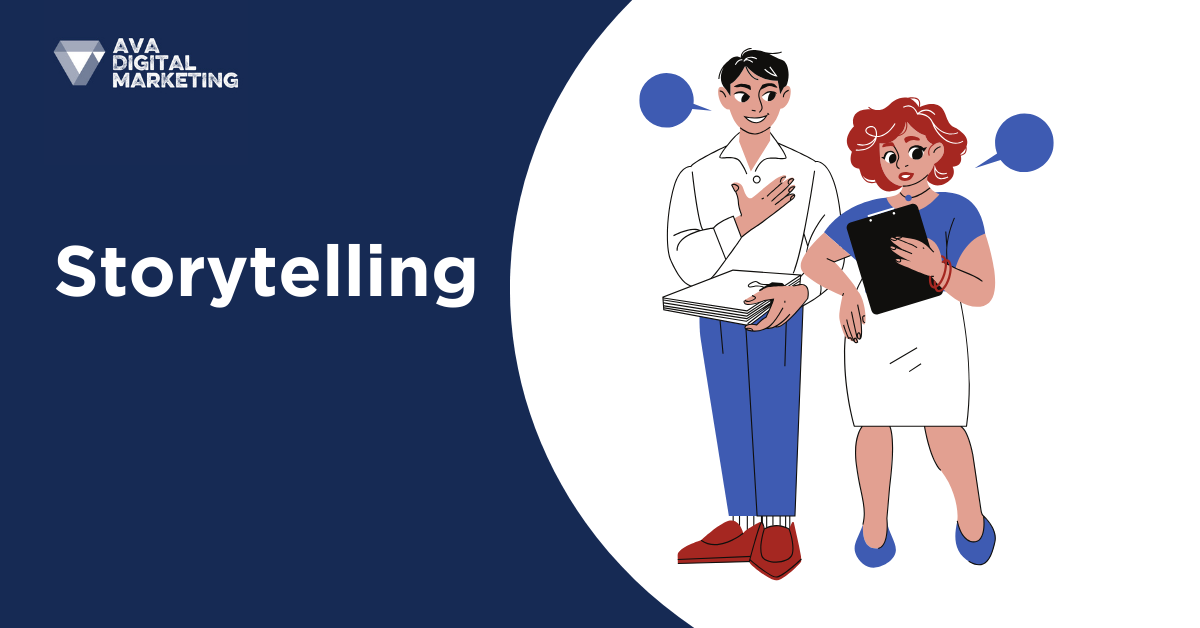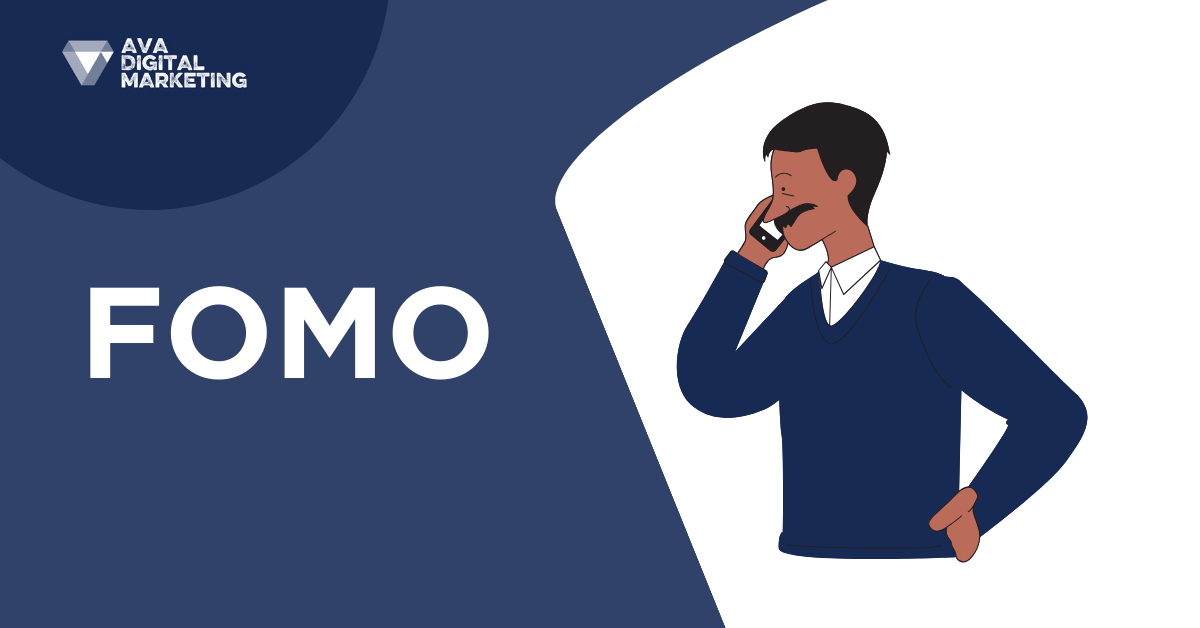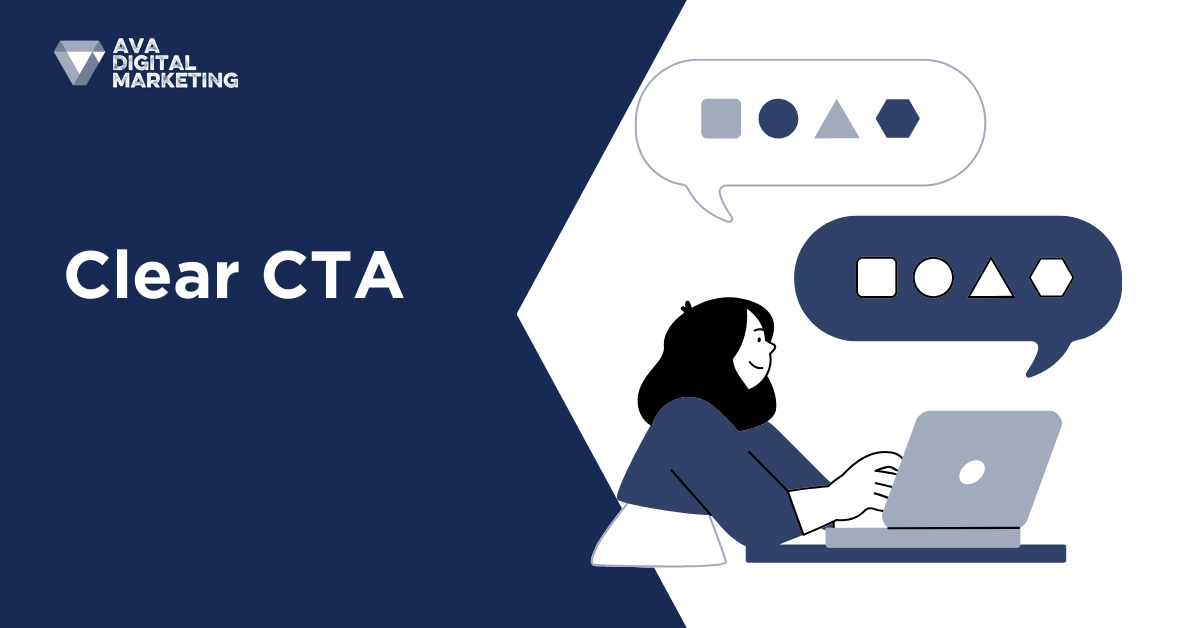Introduction
Among a multitude of digital storefronts, the visual appeal and engagement factor you pour into your ads as an online educator can be the game-changer in attracting your target audience.
Do you find yourself witnessing a plateau in enrollment numbers or a decline in student engagement?
That’s a clear sign it’s time to revisit your ad strategy. Additionally, major updates or new course launches provide natural junctures for a design overhaul.
Succeeding as an online educator starts with a self-admission that your role extends beyond content delivery. You’re the creator of an immersive educational ecosystem that starts with the first point of contact – your ads.
Ad Hooks

Every successful ad begins with a captivating hook. Think of it as the teaser trailer for your educational products. It needs to be impactful, engaging and leave the audience craving more.
In the digital realm, where attention spans are notoriously short, the first 3 seconds are make-or-break. The challenge lies in distilling your message into a brief but gripping snippet.
Choosing the Focus of Your Ad Hook
Benefits → to showcase the tangible advantages of your course.
It requires clear communication of your course offers’ unique selling points, vibrant visuals, success stories and testimonials.
Tips & Solutions → to position your course as a solution provider.
It requires clear articulation of problem and solution, demonstrative visuals and problem-solution narratives.
Educational → to establish authority and knowledge-sharing.
It requires clarity and educational credibility, engaging visuals, expert testimonials and educational snippets.
Challenges & Pain Points → to acknowledge common struggles and offer resolutions.
It requires empathy and a solution-oriented approach, compelling testimonials and before-and after scenarios.
Myths & Misconceptions → to bust common myths and position your resources as a game-changer.
It requires solid research, myth-dispelling content and informative visuals.
Memes & Fun content → to inject humor and resonate with your audience.
It requires tapping into humor that aligns with your brand and messaging, creative visuals, witty copy.
Course Features and Bonuses → to showcase the unique features and bonuses that set your course apart.
It requires clear communication of course features and bonuses, highlights content, feature and bonus-focused visuals.
Reimbursement → to emphasize the value and return on investment.
It requires transparent communication, comparative visuals and ROI statistics.
Credibility → to establish trust.
It requires testimonials, endorsements, industry affiliations.
To gauge the effectiveness of your hooks, pay attention to your audience reactions. If you’re getting increased click-through rates, engagement metrics and ultimately conversions, you can mark that as a positive response to your hooks of choice.
Track your user behavior and adjust your approach based on the performance of each hook type you’re working with for your ad strategy.
RECOMMENDED READING 👉 CRAFT COMPELLING ONLINE COURSE OFFERS
Storytelling

A Story that Sticks
The human brain is wired to respond to narratives, as they stimulate multiple areas associated with emotions, comprehension, and memory retention.
Just like in online education, where information retention is crucial, a narrative structure in ad design enhances the likelihood of message recall.
Consider the prevalence of cognitive biases in decision-making. The story bias, where people are more likely to remember information that was presented to them in narrative form, explains the power of storytelling in online ads.
By adopting this approach, you can capitalize on a psychological predisposition, making your messages more memorable and persuasive.
A Picture that Speaks a Thousand Words
In an era dominated by visual content, the impact of images in online course ad design cannot be overstated. Information presented in images is more likely to be remembered than information presented in words alone, so you must integrate compelling visuals that tell a story.
By incorporating visual narratives into ad design, you can bridge the comprehension gap, providing viewers with a tangible representation of the learning journey.
This approach not only aids understanding but also establishes a visual memory imprint associated with the product you’re advertising.
A Consistent Brand
While it’s true that aesthetics play a crucial role in brand recall, brand consistency has to be understood beyond visual appeal.
Consistency in branding extends to messaging, tone, and values. Your goal is to communicate a coherent narrative across various touchpoints, fostering a sense of reliability and trust among potential learners.
Furthermore, while brand alignment is indeed about adhering to a style guide, it’s about infusing the brand narrative into every aspect of the ad design just as much.
A Tactical Advantage
While catering to diverse needs and demographics as an online educator, strategic storytelling becomes a tactical advantage.
During course launches, for instance, tapping into the scarcity principle — highlighting limited-time enrollment or exclusive early access — entirely transforms the narrative into a compelling call to action, driving engagement and enrollment.
Additionally, strategically incorporating testimonials into the narrative elevates their impact. Frame testimonials as personal success stories to create an emotional connection, addressing the aspirational goals of potential learners and guiding them toward enrolment.
RECOMMENDED READING 👉 ONLINE ADVERTISING ROI: INSIGHTS FOR EDUCATORS
The You POV
Why YOU Matters More than They
Leverage a simple shift from third-person language to first and second-person language for connection-building.
Online learners, often seeking personalized experiences, respond more positively when addressed directly. The use of you creates an instant connection, communicating to the potential student they are acknowledged and understood.
This shift from the detached they to the inclusive you establishes a conversational tone, breaking down barriers and fostering a sense of belonging.
Measuring… Pronouns?!
While the impact of language choice is evident, a concrete measurement of this impact can be challenging. Traditional engagement metrics may fall short in capturing the nuanced influence of pronouns.
However, indirect indicators such as click-through rates, time spent on the ad, and conversion rates can provide valuable insights.
Increased time spent on an ad indicates that viewers are not just merely skimming but instead actively absorbing the content. This is a behavior that can be correlated with the use of personalized language.
From Connection to Conversion
Online learners, surrounded with information, look for educational resources that they find resonate on a personal level.
Ads adopting first and second-person language are more likely to create a sense of urgency and relevance, nudging the viewer toward taking tangible actions, such as enrolling in a program or exploring further.
The persuasive power of pronouns becomes particularly evident in call-to-action (CTA) elements. When CTA buttons are framed with Start Your Journey or Transform Your Life, the viewer is set to contemplate an action that leads to personal transformation.
Tailor the language to align with the educational journey, creating a seamless flow that resonates with the viewer’s motivations and desired results. This direct, personalized approach nurtures a connection that transcends a simple transaction at a digital checkout.
Creating a Sense of Social Momentum

Calling in All Aspirants and Collaborators
Aspirants, who view education not just as a means of acquiring knowledge but as a gateway to a community of like-minded individuals, are drawn to ads that portray collective significance.
Collaborators, keen on engaging with peers and fostering connections, find resonance in the idea of being part of a shared journey.
Within online education, where the desire for connection and shared experiences often drives enrollment decisions, ads crafting a narrative of belonging to a collective hold significant appeal.
Prospective learners are not only browsing for courses, but also looking for a community that aligns with their educational and personal aspirations.
The Risk of Unqualified Engagement
While the creation of social momentum is a powerful strategy, there are pitfalls to be mindful of. Ads that overemphasize the collective narrative without a genuine foundation risk attracting unqualified engagement.
An unfocused appeal to join a movement without clear alignment with the educational niche may lead to an influx of participants who lack genuine interest or commitment.
This dilutes the quality of engagement and undermines the sense of community, potentially resulting in a transient and disengaged audience.
Strategically crafting ads that balance the allure of a collective with the specificity of the educational niche ensures that the community formed around it is authentic and legitimate.
***Dissecting Social Momentum Ad Copy
Designers are using these e-books to level up their logo designs.
This copy employs third-person language, in stark contrast to the YOU POV discussed earlier, addressing the collective group of Designers. The use of level up implies progress and improvement within this creative community.
By adopting a third-person perspective, the ad suggests that designers, as a collective, are actively engaging with the e-books. It positions e-books as a tool that the design community is collectively embracing.
The ad presents the e-books as a transformative resource, suggesting that designers who want to advance their skills are leveraging this specific tool. It creates a sense of shared growth and progress within the design community.
This naturally resonates with designers who aspire to enhance their skills and be part of a community where creative improvement is a shared goal. The use of collective language hints at a sense of unity and shared purpose among designers.
RECOMMENDED READING 👉 BOOSTING ONLINE EDUCATION SALES: AD CAMPAIGNS THAT WORK
Social Proof

Choosing the Formats that Work for You
The effectiveness of social proof hinges on selecting formats that resonate deeply with your learners. Testimonials, success stories, and user-generated content (UGC) stand out as the most compelling formats.
Testimonials
Featuring testimonials from satisfied learners or educators adds a human touch to online education ads.
Personal narratives centered around the transformative effects of a course allow for a relatable connection with the audience, with a strong emphasis on real-world benefits.
Success Stories
Highlighting success stories of individuals who have excelled in their careers or personal development through a particular program establishes the credibility and efficacy of your approach.
Success stories appeal to the aspirational goals of prospective learners.
User-Generated Content (UGC)
Encouraging learners, past and current ones, to share their experiences via images, videos, or written testimonials provides authentic and vibrant social proof.
UGC springs from within the community and in turn encourages more community-building by showcasing the diverse journeys of those engaged with your educational resources.
Testimonials, success stories, and UGC are particularly effective due to their ability to establish trust and relatability.
Learners make significant investments in their education and so it makes sense they would seek assurance in the form of genuine learner experiences.
Testimonials and success stories can help with providing a transparent view of the impact you can have as an educator, further instilling trust in the prospective learner.
Moreover, online education is a personal journey, and prospective learners resonate with stories that reflect their own aspirations and challenges.
Social proof formats such as success stories and UGC humanize the educational experience, making it relatable and compelling.
Sourcing Social Proof
Effective social proof is born from an engaged community. Encourage students to voluntarily share their learning experiences, incentivizing them with recognition or exclusive benefits.
Actively solicit testimonials from satisfied users and curate success stories that align with the diverse demographics and goals of the target audience.
Tap into the organic conversations and achievements within the community by leveraging social media platforms, discussion forums, and dedicated community spaces, to unearth authentic stories that resonate with a broader audience.
Time Your Social Proof Placements
Mid-Campaign Momentum
Introduce social proof ads mid-campaign when initial awareness has been established.
Testimonials and success stories at this juncture capitalize on the interest generated, nudging prospective learners toward active consideration and enrolment.
Post-Purchase Reassurance
Social proof continues to play a crucial role post-purchase. You can share success stories and testimonials with newly enrolled learners to offer reassurance and to start building a sense of belonging within your educational community.
While social proof is a powerful tool to leverage, it should not dominate your campaign entirely. Don’t be over-reliant on social proof while in the initial awareness phase. Instead, focus on diverse ad formats that introduce your offers and their unique value proposition.
Consistent Design

Harmonious Color Scheme
Keeping your color scheme consistent across various ad elements helps with reinforcing your brand identity while overall creating a cohesive visual experience.
The palette should extend beyond the ad to the entire online education platform, establishing a recognizable and memorable brand presence.
Text and Spacing Optimization
Balancing the amount of text in an ad is crucial. Too much text can overwhelm, while too little may not convey the necessary information.
Make sure that you emphasize key information by optimizing spacing and hierarchy. Strategic use of headers, subheadings, and bullet points enhances readability too.
Emphasize Key Information
Key information such as course offers, benefits, and unique selling points must stand out.
Employing techniques like bold text, contrasting colors, or encapsulating important details in a visually distinct section ensures that critical information captures immediate attention.
User-Centric Layout
Organize the ad layout with the user in mind.
Consider the flow of information, guiding the viewer’s eyes from attention-grabbing headlines to informative visuals and then to the call-to-action. A user-centric layout enhances the overall user experience.
Consistency Across Platforms
As ad campaigns often span across various digital platforms, maintaining a consistent design is imperative.
Further, a seamless transition from desktop to mobile ensures that the audience receives a unified and positive visual experience.
Telltale Signs of Inconsistent Design
Mismatched Color Schemes
Inconsistent color usage across different ads or within the same ad is a red flag.
Mismatched color schemes can create confusion and dilute the brand’s visual identity. Regularly reviewing all campaign assets helps identify and rectify color inconsistencies.
Font Discrepancies
Varied fonts and font sizes that deviate from the established brand guidelines can signal inconsistency.
This can compromise readability and weaken the overall visual coherence. Enforcing strict adherence to typography guidelines is essential.
Irregular Layouts
Inconsistent layouts across different ads or platforms can disrupt the flow of information and user experience.
Check for irregularities in the arrangement of key elements and maintain a standardized layout structure throughout the campaign.
Divergent Imagery Styles
The use of disparate imagery styles or visual treatments can lead to a lack of visual harmony.
Ensure that images and graphics adhere to a unified style guide, avoiding abrupt shifts in visual aesthetics that may confuse the audience.
Engagement vs Attention
Don’t get caught up in the excitement of instant engagement. A hasty approach to targeting and personalization can lead you down a fruitless path.
Oversimplification and a lack of nuance may result in ads that feel invasive or, worse, irrelevant to your audience.
Imagine bombarding a potential student with information about a course they’ve already completed or showing them beginner-level content when they are advanced learners – an instant disconnection is inevitable.
Leverage the data gained from your targeting efforts to ensure that personalization feels natural and genuinely resonates with the potential learners. Strive for relevance rather than just immediate attention.
Research thoroughly the preferences, learning styles and educational needs of your prospective students. Analyze past interactions to discern patterns and glean insights that transcend mere demographic data.
Knowing the learner’s journey is crucial. Understand their educational background, preferred formats of content consumption, and the specific pain points they seek to address through further education.
This deep dive allows you to move beyond generic personalization, ensuring your ads speak directly to the unique aspirations and challenges of your audience.
FOMO

Urgency without Desperation
FOMO, when used effectively, taps into the innate desire to be part of something significant. It’s about highlighting the unique opportunities your educational resources present without inducing negative emotions.
The key is to frame your message around the positive aspects of immediate action, such as gaining a new skill, staying ahead of industry trends, or accessing limited-time resources.
The Power of Countdowns
One of the most effective ways to instill FOMO with ads is the countdown timer. A ticking clock beside a compelling offer creates a visual representation of urgency, urging potential learners to act swiftly.
Ensure clarity in your messaging — whether it’s a limited-time discount, enrollment period, or exclusive webinar. The countdown not only communicates urgency but also serves as a dynamic design element, capturing attention and guiding the viewer’s focus.
Don’t Push, Motivate
While FOMO can be a compelling catalyst for engagement, it’s crucial to tread the fine line between urgency and respect for your audience’s discernment.
Constantly throwing urgency-driven messages at your audience can quickly lead to fatigue and, ultimately, disengagement. Maintain a balanced approach by strategically incorporating FOMO tactics into your overall marketing strategy.
Respect your audience’s intelligence and make them feel empowered rather than pressured.
Additionally, employing false scarcity can seriously erode trust in your brand. Steer clear of vague countdowns that have no clear consequences or repeatedly extending deadlines. This will undoubtedly breed skepticism among your audience.
FOMO should be a genuine reflection of limited opportunities, not a manipulative ploy.
Gamification

Elevating Without Overwhelming
Gamification, when executed thoughtfully, acts as a captivating bridge between education and entertainment.
Inject some fun and interactivity without risking overshadowing the core of your message. The key here is to strike a balance. Make sure that your use of game elements enhances your learning proposition, not distract from it.
Language and Incentives
Language is the gateway to successful gamification in online education ads. Choose a narrative that resonates with your audience, aligning with the tone of your educational offerings.
Whether it’s a quiz, a storyline-driven scenario, or a simple interactive activity, the language should seamlessly blend with the educational context, creating a cohesive experience.
Incentives play a pivotal role as well. Understand your audience’s motivations and tailor rewards accordingly.
In the online education space, incentives could range from course discounts and exclusive content access to badges or certificates. The allure of progressing in both knowledge and virtual achievements intertwines, driving sustained engagement.
Game Your Way into Sign-Ups
Online education, by its nature, demands a departure from traditional learning methods. Gamification aligns seamlessly with this shift, capitalizing on the digital environment’s potential for interactive and dynamic experiences.
Firstly, it caters to the diverse learning styles of online learners. Gamified elements provide a multi-sensory experience, catering to visual, auditory, and kinesthetic learners alike.
This inclusivity enhances the accessibility of educational content, making it more engaging and memorable.
Secondly, gamification addresses the challenge of maintaining learner motivation in an online setting.
By incorporating elements like progress tracking, virtual rewards, and friendly competition, you create an environment that fuels intrinsic motivation, encouraging learners to actively participate and progress.
Lastly, gamification capitalizes on the social aspect of learning. Incorporating games and challenges helps you instill a sense of community among learners, turning the educational journey into a welcoming shared experience.
Clear CTA

CTAs Tailored for E-Learning
Use CTAs to carefully guide prospective learners throughout their educational journey. Language matters. Craft CTAs that speak to the aspirational nature of learning.
Phrases like Start Your Learning Adventure Now or Unlock Your Potential resonate, instilling a sense of excitement and personal growth.
Specificity is key. Outline the benefits clearly. Instead of a generic Sign Up, opt for CTAs like Enroll for a Free Trial or Access Exclusive Learning Resources. The specificity primes potential learners with a clear understanding of what awaits them beyond the click.
Realistic Expectations from Your CTA
While a well-crafted CTA can significantly boost engagement, it’s not a silver bullet. As an online educator running ads, aim for measurable outcomes such as increased click-through rates and conversions, but recognize that the CTA is part of a broader ecosystem.
A CTA serves as an entry point, inviting learners into the next phase of their educational journey. Set realistic benchmarks aligned with your overall campaign goals. It’s not just about the quick conversions, but also about setting up a connection that extends beyond a single interaction.
Highlighting CTAs in Ad Design
Position CTAs prominently, ensuring they are easily noticeable without overshadowing the rest of your content. Employ contrasting colors or design elements that guide the viewer’s eye toward the CTA, creating a seamless flow from attention to action.
Visual cues can enhance the urgency of your CTAs. Include directional arrows and dynamic elements that will draw attention immediately to the CTA button.
Keep in mind that the design should complement the CTA’s message, all in the service of propelling learners toward enrollment.
Conclusion
Committing to elevating your ad design and engagement is about strategic refinement rather than a radical shift.
As an online educator, understanding how to intelligently leverage your existing resources and refine your positioning keeps you competitive.
Consider repurposing successful elements from your programs into your ad design. If a particular teaching methodology or module has received rave reviews, incorporate visual cues from that success into your ads.
Every visual element should be the essence of your educational brand. Consistency breeds familiarity and familiarity breeds trust – a key factor in converting potential customers into enrolled learners.
